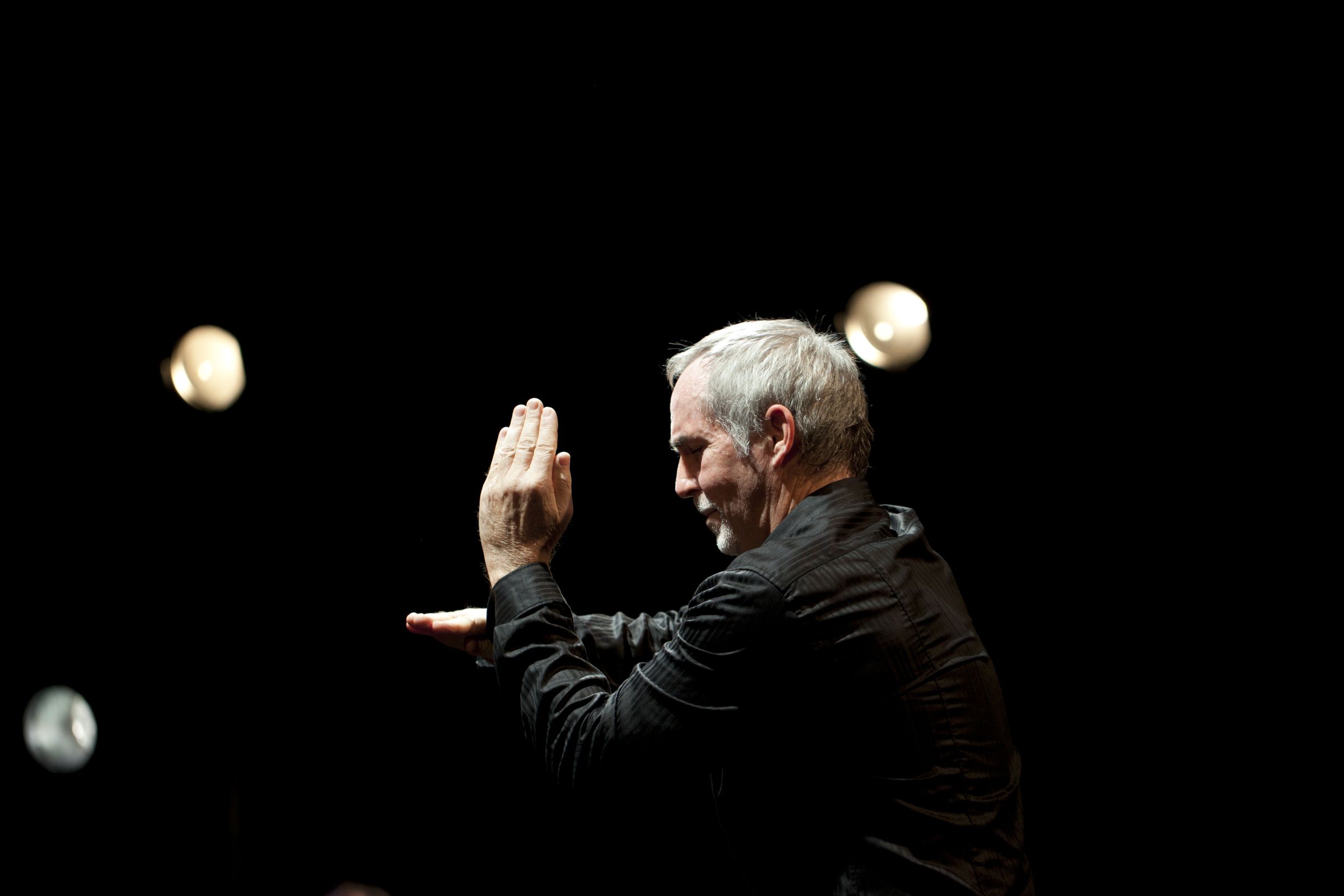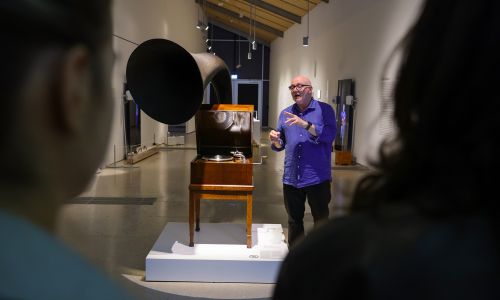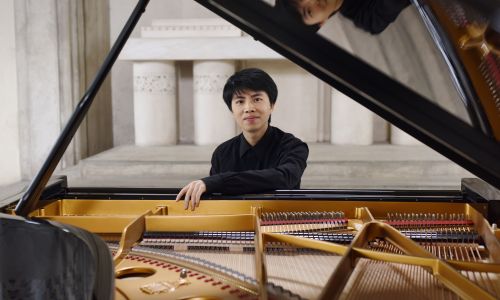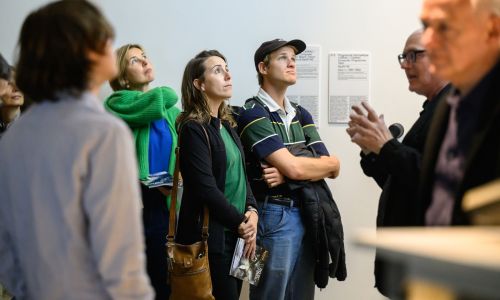Pavilion A
Free entrance
Students from EPFL and the University of Lausanne (UNIL) are bringing their musical, theatrical, and dance skills to ArtLab for a unique workshop and performance series led by Walter Thompson, inventor of the real-time composing sign language known as soundpainting.
From February 12th-16th, Thompson led a series of five workshops for EPFL and UNIL students, which culminated in two performances at the EPFL-Pavilions on the 18th and 19th. The events were organized by the College of Humanities and UNIL musicology professor Constance Frei, a lecturer in the CDH Social and Human Science program (SHS), in collaboration with the UNIL/EPFL Cinéclubs and the student association Musical (EPFL AGEPoly).
Soundpainting is a form of 'live composition' invented by Thompson, an American composer, 1974. The sign language comprises more than 1,500 gestures, which are signed by a composer, (or soundpainter), and responded to in real time by performers (musicians, actors and/or dancers). The composer uses gestures to indicate to the performers who should respond, when, and with what type of action – whether it’s a musical note, a dance move, or a spoken word.
“Each gesture is like a concept that we propose, and then we interact with the performers,” explains EPFL mathematics student and event co-organizer Loni Mahé. In addition to being a pianist, Mahé is a certified soundpainter, having first taken up the composing language at the age of 12.
Music, cinema, and science
For the first performance, the students provided improvised musical accompaniments to three silent films selected by the Cinéclubs (One Week by Buster Keaton (1920), Entr’acte by René Clair (1924), and Le voyage dans la lune by Georges Méliès (1902)). The second performance was a totally improvised, experimental soundpainting concert.
Soundpainting is especially good for creating a soundtrack, because you can illustrate the visual aspects while also producing something really individual through both tonal and atonal improvisation.
Constance Frei, UNIL musicology Professor
The soundpainting event at EPFL was organized in response to student demand for a greater musical presence on the campus. Both Frei and Mahé emphasize that music is highly complementary to EPFL research, in addition to being a fascinating field in its own right.
“Music is very important for science; it’s one of the original quadrivium of liberal arts education, along with arithmetic, astronomy and geometry,” Frei says. “It all comes down to numbers: an interval, for example between the notes C and G, is a mathematical proportion. At a school like EPFL, it’s essential to have a space to develop music, and we’d like to see more of this in the future.”
Soundpainting in action from 2019 workshop at the University of Lausanne.



